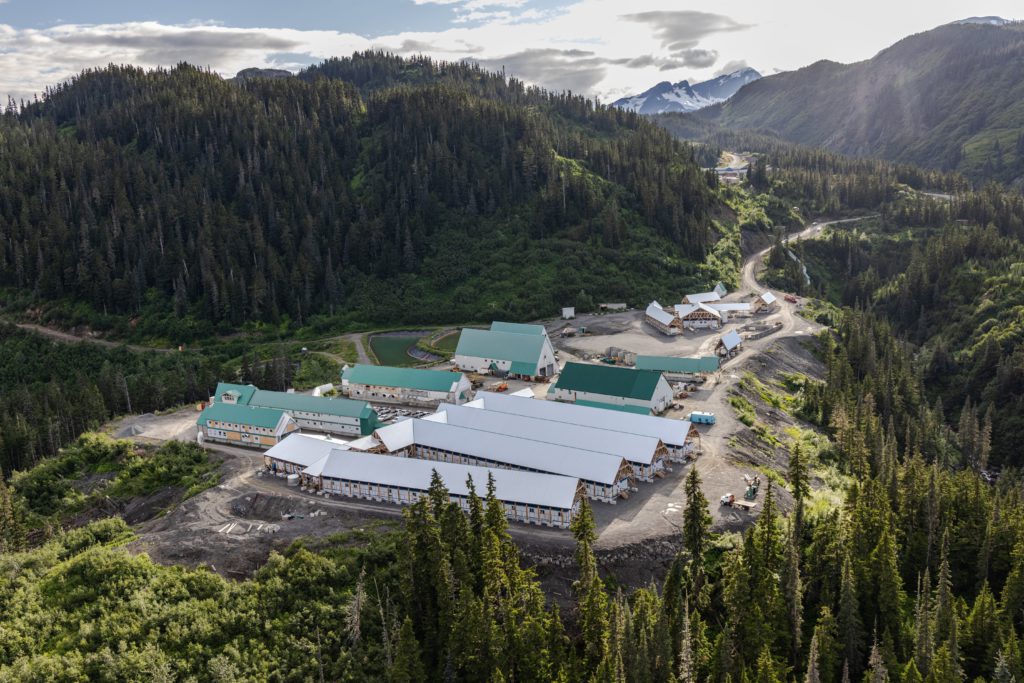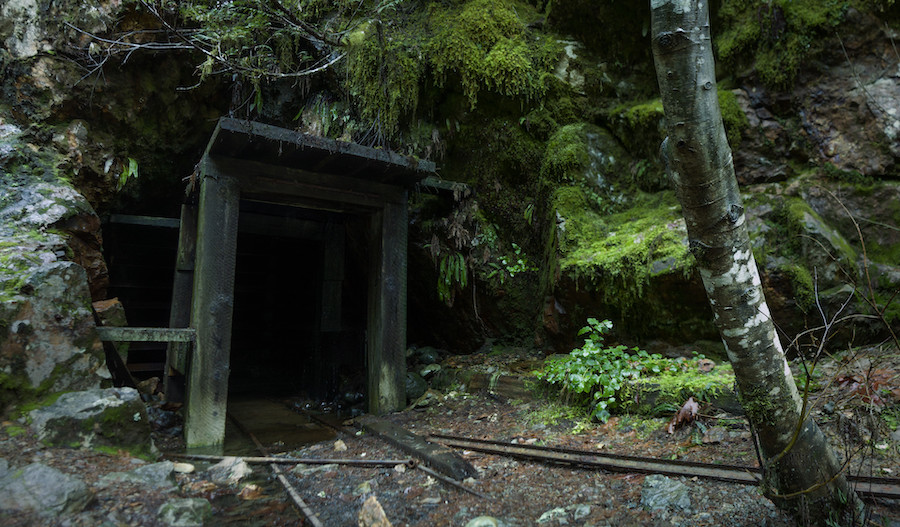Elizabeth Freele and Rachel Dekker | January 17, 2023 |

Stock image.
To say 2022 was tumultuous is an understatement. War, inflation, climate disasters, market volatility: the past year was anything but business as usual for most. ESG, which had seemed firmly embedded in business, began to experience a backlash, facing criticism as a “woke capitalist” distraction. Yet, a recent Harvard study indicates 81% of institutional investors in the US and 83.6% in Europe plan to increase their ESG allocations over the next two years.

And while climate change continued to dominate, biodiversity and other topics entered global sustainability discourse, revealing widespread recognition that the challenges we face today are deeply interconnected economic, political, social, and environmental issues requiring holistic, collective action.
With so much upheaval, it can be difficult to spot the trends and anticipate what lies ahead for mining companies and their ESG journeys. With standards and regulations ensuring social topics become more firmly embedded in expected ESG practice this year, expect “S” to feature more prominently. What might that look like? Here are our top 10 “S” trends mining companies should take note of and take action on in 2023.
1: Global crises driving local risk
Last year saw a confluence of global challenges that had decidedly local impacts. Global energy prices, political unrest, extreme weather and climate disasters, food shortages, inflation, supply chain disruptions, diminished ecosystem services, and lingering pandemic impacts affected the resilience of countries, regions, and communities.
The UN reported that, by August 2022, cost of living increases had already pushed 71 million into poverty this past year, while the IMF forecasts that 2023 will feel like a recession for many. Socio-economic stress often leads to social unrest and can also drive resource nationalism. In 2023, contributions to local poverty relief, liveability, and economic development can build resilience in your company’s operating context, contributing to stronger relationships and helping manage asset-level social risk.
2: Investors expecting more robust community practices
Codification of social management practices is maturing, including ICMM’s 2022 Performance Expectations and a growing list of industry and commodity -specific standards, principles, and protocols. In 2023, tailings management will be a key area of action, as ICMM members, responsible operators, and miners with particularly ESG-oriented investors implement the Global Industry Standard on Tailings Management (GISTM), which contains a robust set of expectations around community engagement, participation, and collaboration, as well as socio-economic assessment, that don’t reflect most companies’ current practices.
With strong investor endorsement, GISTM is raising the bar for operational community involvement across the industry in 2023, and companies will do well to review and/or upgrade their social management practices to avoid being caught flat-footed.
3: Mainstream operationalization of UNGPs
The UN’s Guiding Principles on Business and Human Rights (UNGPs) have rapidly become the global standard for corporate human rights, and particularly for asset-level community feedback (or grievance) mechanisms. Its Reporting Framework is backed by a coalition of 88 investors with US$5.3 trillion in assets under management. Multiple industry frameworks including the RGMPs, GISTM, IRMA, the Equator Principles, and ICMM’s Performance Expectations explicitly reference alignment with the UNGPs.
The Voluntary Principles on Security and Human Rights and the IFC Performance Standards help to operationalize the principles, as does MAC TSM’s operational grievance mechanism design guide. Even the new GRI Reporting Standards, effective January 1, 2023, include UNGP disclosure. The UNGPs are here to stay. As human rights legislation proliferates globally in 2023, and investors recognize the significance of human rights risk, companies can expect the UNGP “Effectiveness Criteria” to increasingly feature in mining ESG audits and due diligence.
4: Drive to improve DEI performance
Expectations of mining company action on diversity, equity, and inclusion (DEI) have grown rapidly in recent years. Several reports have now revealed widespread discrimination, harassment, racism, and sexual violence; findings that are symptomatic of industry-wide inadequate efforts to create safe and inclusive workplaces that attract and retain a variety of talent. And a range of stakeholders are taking note and taking action. While major proxy advisory firms update their proxy voting policies on DEI, asset managers seek disclosure on a broader range of DEI themes – mining CEOs have indicated to EY that DEI performance is the social topic on which they expect most investor scrutiny in 2023. Meanwhile, employees are voting with their feet. Workers leave mining more than other sectors, forecasted mining worker shortages are in the hundreds of thousands globally, and mining engineering degree enrolment is in decline in Canada, the US, and Australia. Mining companies will urgently need to understand and improve their DEI performance and worker experience to secure continued access to relevant talent in 2023.
5: Shifting materiality and ESG prioritization
As ESG matures, companies will need to shift away from outdated approaches to materiality and disclosure. Processes that focus excessively on opinions of select company and external stakeholders and communications that parlay one ESG success story into purported sustainability leadership fall short of what’s expected of companies today. No more cherry-picking only those areas of competitive advantage, strong performance, or trendy topics. Instead, meaningful materiality requires a robust understanding and analysis of your impacts (actual/potential and positive/negative) to prioritize ESG action and disclosure, even when it’s uncomfortable. While some continue to focus exclusively on financial materiality, this year will see “double materiality” (capturing both socio-environmental impacts and financial risk) emerge as a foundation for more effective enterprise risk management.
Social topics on which mining companies are likely to have impacts — such as human and Indigenous Peoples’ rights, DEI, cultural heritage, and community impacts — are likely to demand and receive more strategic ESG attention. And with ESG litigation on the rise as more stakeholders rely on sustainability information, any inaccurate analysis, action, and disclosure means risking great financial, relationship, and reputational costs.
6: ESG standardization and harmonization advances
Broad criticism of the vast inconsistencies among ESG disclosure standards, requirements, and related rating and ranking frameworks are prompting continued efforts to standardize and harmonize. This year will see the much-anticipated completion of the ISSB’s institutional and technical efforts to set the global standard for (investor-focused) sustainability-related disclosure. Meanwhile, recent and imminent ESG rating regulation, especially in the EU, suggests a trend of pushing from pure “enterprise value” ESG towards double materiality. Additionally, a systems lens is emerging across all ESG disclosure and assessment, which acknowledges the interconnected nature and deep complexity of sustainability issues such as climate change, persistent inequality, and loss of biodiversity and ecosystem services. As a result, companies can expect calls to pay closer attention to social impacts and community collaboration requirements in scenario and emergency response planning — whether for tailings management, climate change, nature loss, or operational emergencies – so that stakeholders can assess and compare the level of embeddedness and success of ESG practices.
7: Radical transparency
To help build credibility within an often-distrusted sector, both voluntary and mandatory disclosures are promoting radical transparency on impacts, risks, and performance. The GISTM, GRI, EU Corporate Sustainability Reporting Directive (CSRD), and other initiatives will set a new tone in 2023 for disclosure on a broader range of topics to a broader range of stakeholders. Transparency, including for co-design and collaborative risk management, will result in better-informed stakeholders. While companies may initially feel vulnerable about disclosure of, perhaps, imperfect practices or not-yet-good-enough performance, especially at a local community level, operators should prepare for these standards to usher in an era of enhanced transparency and new levels of community co-development in operational decision-making and risk management.
8: Lens on value chains
Value chains and their often hidden social and environmental risks and impacts are shifting into focus. Mandatory due diligence and disclosure requirements are emerging in jurisdictions and standards globally. Climate disclosure rules are expected in 35 jurisdictions and several, such as the US SEC’s regulations, cover Scope 3 (value chain) emissions. The ISSB plans to adopt the same scope. Meanwhile, human rights legislation, including the EU’s Directive on Corporate Sustainability Due Diligence, has been enacted or tabled in at least 15 countries (hosting over half of all ESG raters), many with a growing focus on modern slavery.
Mining companies, with their products being early in the value chain, can expect an increase in information requests and demands to demonstrate or improve their human rights performance. Downstream value chain partners and investors who, themselves, are under regulatory pressure to conduct human rights due diligence across supply chains and investment portfolios, may be compelled to divest from miners who cannot, in a timely manner, demonstrate good human rights practices and performance.
9: Growth of “green-hushing”
Last year, we anticipated a significant rejection of greenwashing by companies without the sustainability credentials to back up their commitments. Well, that happened, and then some… Companies rushing to put out vague and lofty commitments for the sake of having, say, a climate goal to point to, faced a backlash from critical stakeholders questioning the substance behind their objectives. We now see a growing new trend of “green-hushing.”
A recent South Pole report found that 25% of companies now don’t plan to talk about their science-aligned climate targets at all, usually to avoid scrutiny. This is detrimental to companies and the broader industry, hampering crucial industry knowledge-sharing on decarbonization, while possibly eroding stakeholder trust and social acceptability. In 2023, companies are advised to take a thoughtful, credible approach rather than opting for silence, such as by setting public objectives to deepen their understanding of issues like climate change before setting science-based emissions reduction targets.
10: Taking a stance on social issues
Russia’s invasion of Ukraine, more than anything before, demonstrated that not only consumer brands but mining companies, too, are expected to “care.” Several mining investors and operators opted to divest from or sell Russia-based assets and many more were compelled to issue position statements on the topic to clarify their rejection of Russia’s actions. The 2022 Edelman Trust Barometer suggested that “societal leadership” is now seen as a “core function of business” and forecasted that calls for business to take a stand on and engage even more in societal issues are growing.
But while stakeholders increasingly expect corporate action and positions on economic inequality, racial justice, LGBTQ rights, and other issues with social implications, PWC’s 2022 Corporate Director Survey suggests that most Boards are not substantially discussing social issues as part of their governance responsibilities and may be missing a key blind spot.
Overall, we have seen ESG become more deeply entrenched in global business and investment practice in 2022, a trend which shows no signs of abating in the year ahead, to the chagrin of some. Polarization and politicization of ESG are on the rise in the US and beyond. And, as a global recession looms, companies will need to balance the need to manage longer-term ESG risk while continuing to meet immediate financial performance objectives, even as development and operating costs continue to rise for many.
However, the underpinning principles of managing business risk and reducing adverse impacts through responsible governance and sustainable operations remain valid as ever, as interconnected challenges continue to pose familiar and unprecedented risks to companies globally. The number of consumers and investors who care about environmental and social issues only continues to grow, with a lens to the future and undeterred by the politics of the day. So, mining companies will do well to ensure their leadership and boards are equipped to manage and govern their businesses responsibly in a world of volatility and increasingly interconnected impacts; they may find 2023 is the year to cultivate that crucial social performance skillset.
Elizabeth Freele and Rachel Dekker are the co-founders and managing partners of mining sustainability think tank and ESG consultancy Sympact. Sympact supports companies in ensuring their social performance meets growing expectations through advisory services, training, and thought leadership products.














